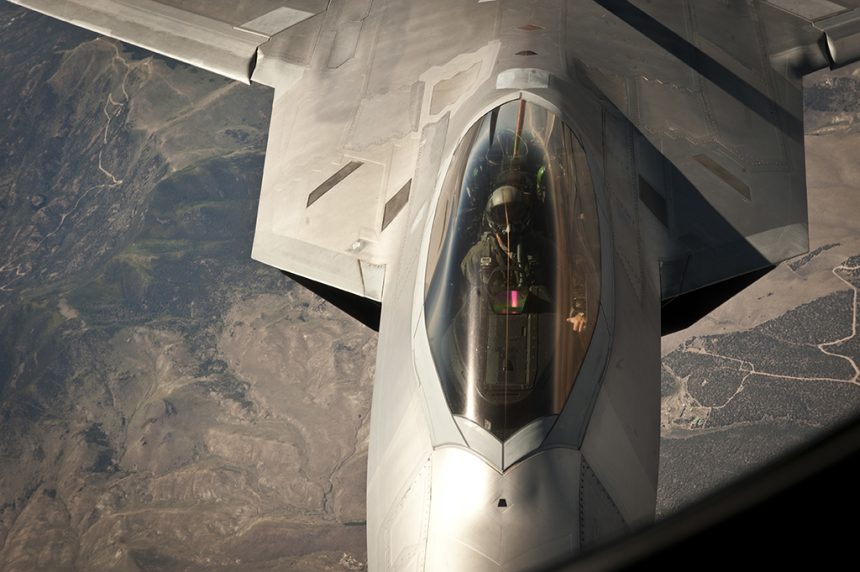Although they were not conceived to play this kind of role, F-22 Raptors have emerged as some of the U.S.-led Coalition’s most reliable combat assets in supporting coalition planes during air strikes in Syria and Iraq.
At the beginning of July, U.S. Air Force F-22 Raptor jets had flown only 204 sorties out of 44,000 launched by the U.S.-lead coalition against ISIS in Syria and Iraq. Little more than a month ago, the multirole stealth combat planes deployed to Al Dhafra airbase in the UAE had dropped 270 bombs on targets located in 60 of the 7,900 locations hit by the other aircraft supporting Operation Inherent Resolve.
Even though the largest number of air strikes is carried out by other assets, it looks like the role played by the (once troubled) F-22 is pivotal to ensure the safety of the other aircraft involved in the air campaign: the Raptors act as “electronic warfare enabled sensor-rich multi-role aircraft” escorting strike packages into and out of the target area while gathering details about the enemy systems and spreading intelligence to other “networked” assets supporting the mission to improve the overall situational awareness.
“We are operating regularly in Iraq and Syria. The F-22’s advanced sensors and low-observable characteristics enable us to operate much closer to non-coalition surface-to-air missiles and fighter aircraft with little risk of detection,” said Lt. Col. J. (name withheld for security reasons) in a recent 380th Air Expeditionary Wing release. “We provide increased situational awareness for other coalition aircraft while simultaneously delivering precision air-to-ground weapons. This allows us to reduce the risk to our forces while mitigating the risk to civilian casualties, one of our highest priorities in this conflict. It is a true multirole aircraft.”
In simple words, the F-22 pilot leverage advanced onboard sensors, as the AESA (Active Electronically Scanned Array) radar, to collect valuable details about the enemy Order of Battle, then they share the “picture” with attack planes, command and control assets, as well as Airborne Early Warning aircraft, while escorting other manned or unmanned aircraft towards the targets. As happened when they facilitated the retaliatory air strikes conducted by the Royal Jordanian Air Force F-16s after the burning alive of the pilot Maaz al-Kassasbeh captured on Dec. 24, 2014.
Needless to say, every now and then they can also attack their own targets using Precision Guided Munitions: two 1,000-lb GBU-32 JDAMs (Joint Direct Attack Munitions) or 8 GBU-39 small diameter bombs, “which have been successfully employed against key ISIL targets. [The SDB] is extremely accurate from very long distances and has the lowest collateral damage potential of any weapon in our inventory.”
Therefore, although this may not be what the F-22 was conceived for, the U.S.’s premier air superiority fighter is excelling in a new role: making other aircraft more survivable in contested airspaces like Syria and Iraq.
Top image credit: U.S. Air Force
















